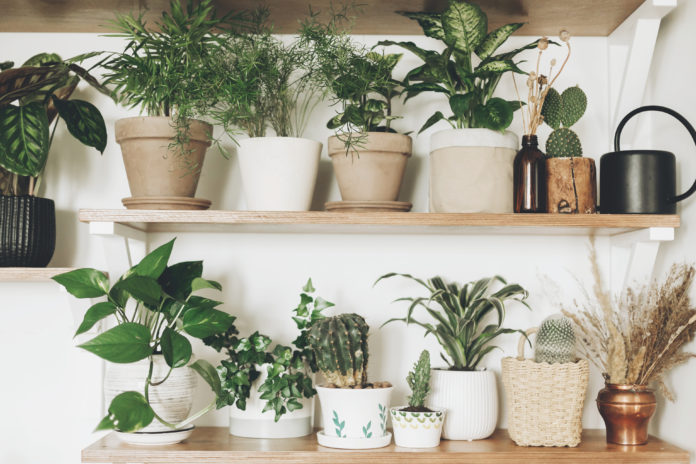This week, many of us are starting to emerge from a two week blast of arctic air. We might want to think that with the arrival of the end of February, spring is right around the corner; afterall, the days have gotten noticeably longer, some of the early spring bulbs, like snowdrops and daffodils are starting to peek through the soil in our flower beds, and the birds have been positively melodious in recent days. In truth, the entire month of March can be brutal and LONG until true spring legitimately arrives. Football is over, baseball hasn’t started, and it is still a few weeks until NCAA March Madness. You’ve completed your winter maintenance chores around the house (you have done them, right?) but it is too early to delve too deeply into spring maintenance. While it is a wee bit early to start doing much in the way of garden prep for the summer outdoor growing season, it is the perfect time to re-evaluate your indoor houseplant situation. Adding real life houseplants to your indoor living space accomplishes numerous objectives: not only do plants help with indoor air quality (although there is some dispute about this), they also add color, interest, and decor.
Contrary to what you might think, taking care of indoor plants does not have to be complicated. If you do it right, some plants can even be repurposed in the warmer months to help decorate your outdoor living space. Other plants are the gifts that keep on giving: they are such prolific growers that you can divide them and give them away as economical, personal gifts to friends and family. If you aren’t careful, you might find yourself with a new hobby!
Like people, plants come with a variety of needs, so before you go traipsing off to your favorite garden center, a little research via the internet (or your local library) will do you a world of good. Some plants like moist soil, others like arid dirt. Some plants crave direct sunlight, while others prefer indirect. Some are safe for curious pets and children, while others can be dangerous.
Supplies
You will also need a few supplies to keep on hand to make sure you can provide baseline care AND display them in visually appealing ways. When you’re ready to level up your plant game, we can start talking about grow lights, special tools, and more. But for now, these few things should suffice:
Pretty pots: As soon as you bring that new plant home, you will want to repot it. The plant will benefit from the fresh soil and larger home so it can establish itself more quickly and thoroughly in its new space. Choose new pots that are 1-2 inches larger than the original.. If possible, pick a porous pot, like terracotta, ceramic, or earthenware, instead of plastic. Not only do the porous pots look better than plastic, they also ensure even drying out of the soil. You can get really creative with whimsical pots and containers to add more of a statement to your greenery.
Drainage rocks: Putting a layer of rocks at the bottom of your pots will prevent overwatering and root rot.
Potting soils: While most plants are perfectly happy with normal potting soil, some plants like cacti and other succulents, or african violets and orchids, benefit from specialized soil. Make sure you are using specially formulated soil, and not just dirt from that far corner of your yard.
Plant stands: sometimes, finding the right place to display plants can be tricky. Nice plant stands can elevate off the floor out of the way of children and pets and get them to better light sources. Plant stands come in a variety of styles, so you should be able to find ones that fit your decor.
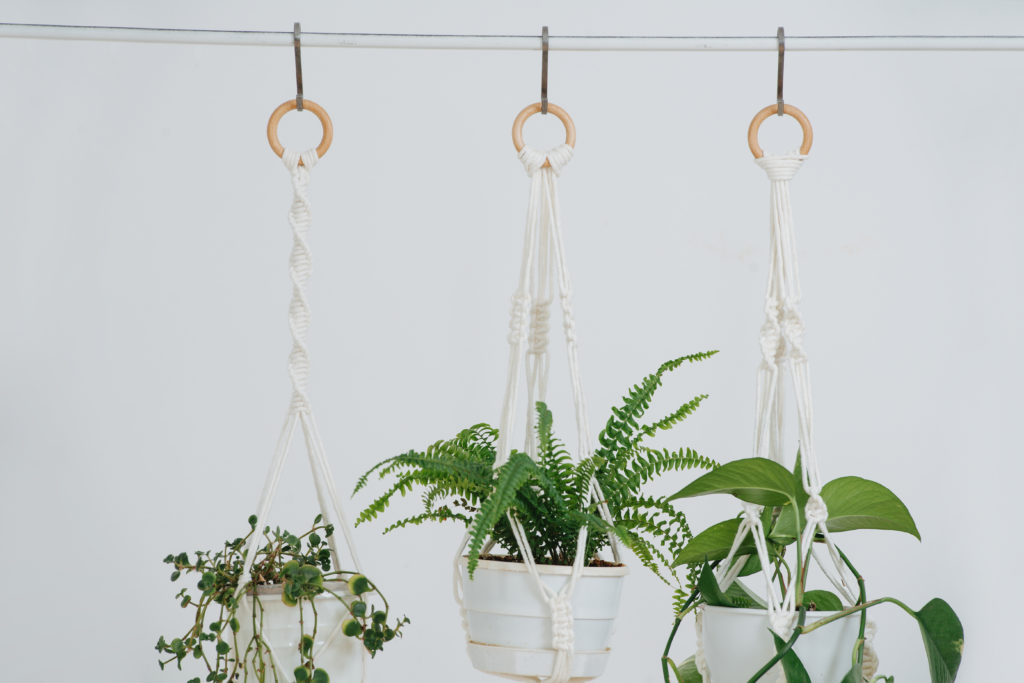
Plant hangers: Images of macramed masterpieces from the 1970’s creep into our heads when we think about plant hangers, but they are effective ways to display plants AND macrame is kind of retro chic right now. There are other more modern varieties to be found if you like scouring the internet. Regardless of what you pick, just make sure you have a strong enough hook in your ceiling to safely hold the weight of the plant and its pot.
Watering can: Sure, you can use any vessel you have lying around the house, but a legitimate watering can is not only adorable, but can also make watering easier, less messy, and more fun! Thus, the more likely you are to follow through with simple plant care. Don’t try to use that large unwieldy one you use outdoors in the summer; try to find one that has a long slim spout so you can more easily direct the stream of water where it needs to go without dripping everywhere
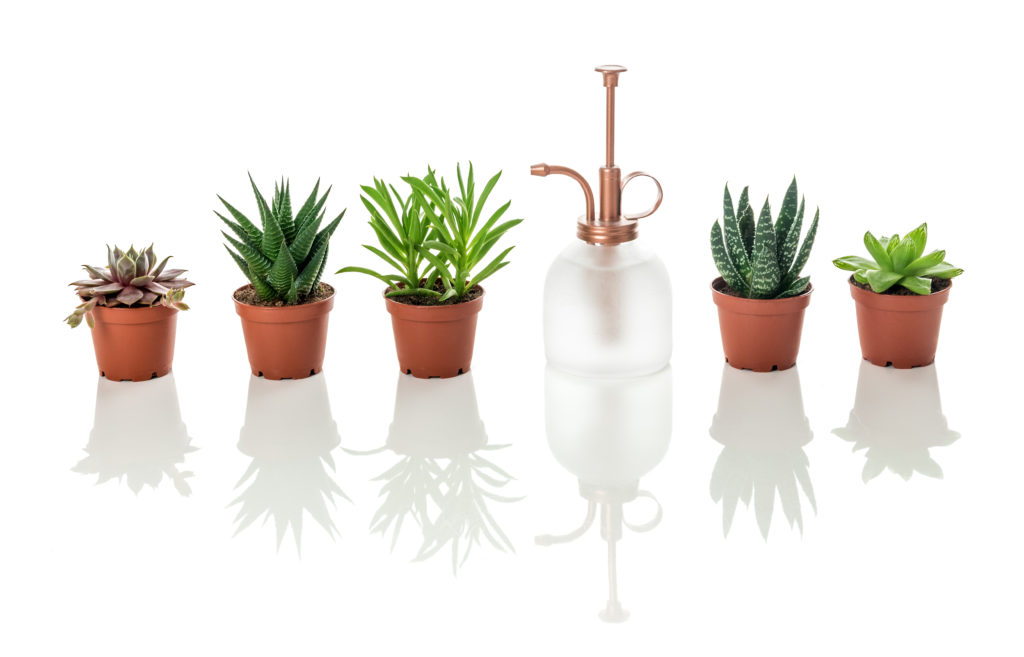
Mister: Some plants like ferns and Norfolk island pines, benefit from the humidity offered by a mister. You can just pick up a cheap spray bottle at your favorite five-and-dime. Or, if you like fun toys, you can get a fancier one like this:
Fertilizers: While you don’t want to over fertilize your new friends, a little treat every once in a while will help them flourish. Follow the directions carefully on the package.
Picking plants for your home
Here are just a few of our favorite house plants (and a few of their idiosyncrasies) to get you started. If you keep your eyes peeled, many of these can be picked up at your favorite grocery store. Most are almost always available at any garden center:
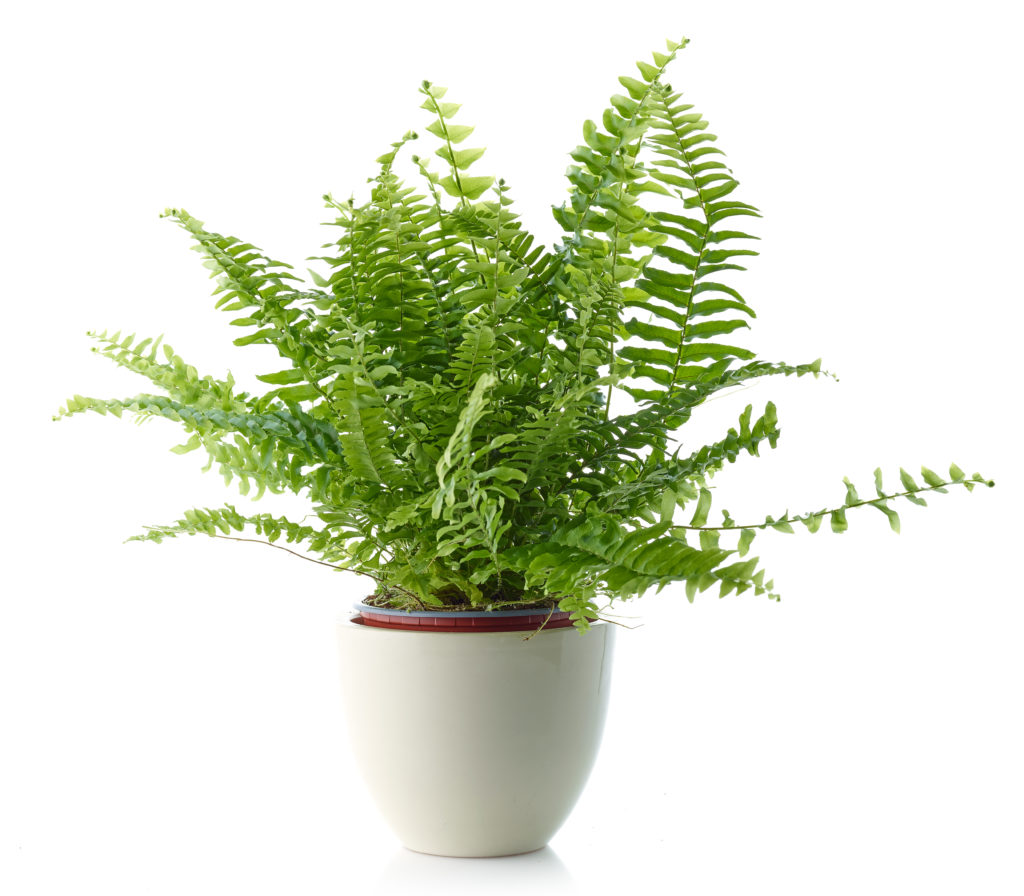
Ferns: There are multiple varieties of ferns you can keep indoors year round. The Boston Fern and the Asparagus Fern are but two examples. While many of us save large hanging ferns for our front porches in the summer, ferns indoors add spritely contrast to more plain leafed plants.
- Moisture: high. Ferns love wet soil and benefit from regular misting.
- Sunlight: Not too bright, but not too dim. Near a window with indirect light would work.
- Toxicity: depends on the variety. Please research. The common Boston ferns are generally considered safe.

Spider Plants: These trailing plants make for a whimsical atmosphere and lend themselves well to hanging
- Sunlight: Bright indirect light
- Moisture: Needs to completely dry out between waterings
- Toxicity: Safe for pets!
- Makes babies for easy transplanting
- BONUS: These can be grown in just water! Just take a clipping and put it in a glass jar and watch the roots develop. No need to transplant to soil; just replenish the water occasionally.
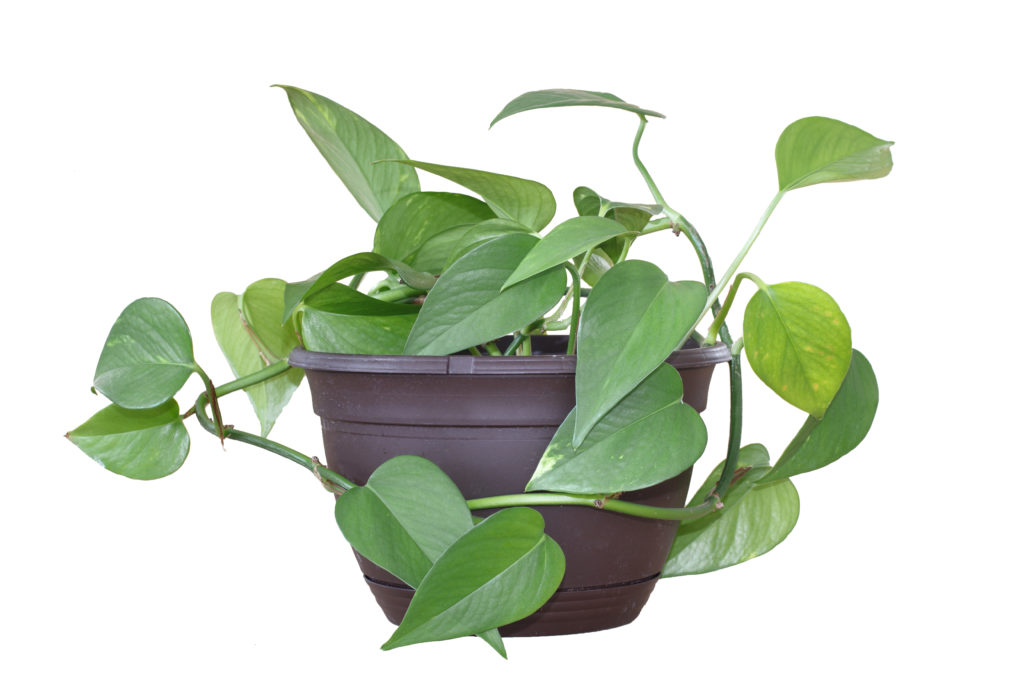
Pothos: This is a trailing plant that is extremely hardy and tolerant of neglect. You probably know someone that has a pothos plant that can give you a free cutting to get you started. They are incredibly easy to root and very low maintenance to care for.
- Sunlight: Low light tolerant
- Moisture:Trailing
- Toxicity: Can irritate skin and are poisonous if ingested. Keep away from pets and children.
- Easy to reroot cuttings for transplant
- BONUS: These can be grown in just water! Just take a clipping and put it in a glass jar and watch the roots develop. No need to transplant to soil; just replenish the water occasionally.
Norfolk Island Pine: While a bit more high maintenance than some, these plants are versatile and worthwhile.
- Sunlight: Full Sun
- Moisture: Soil should dry out between waterings. Mist plant between waterings to maintain humidity
- Likes warmer temperatures and acidic soil
- Toxicity: Needles are slightly toxic to pets but safe for humans
- Can move outdoors in summer
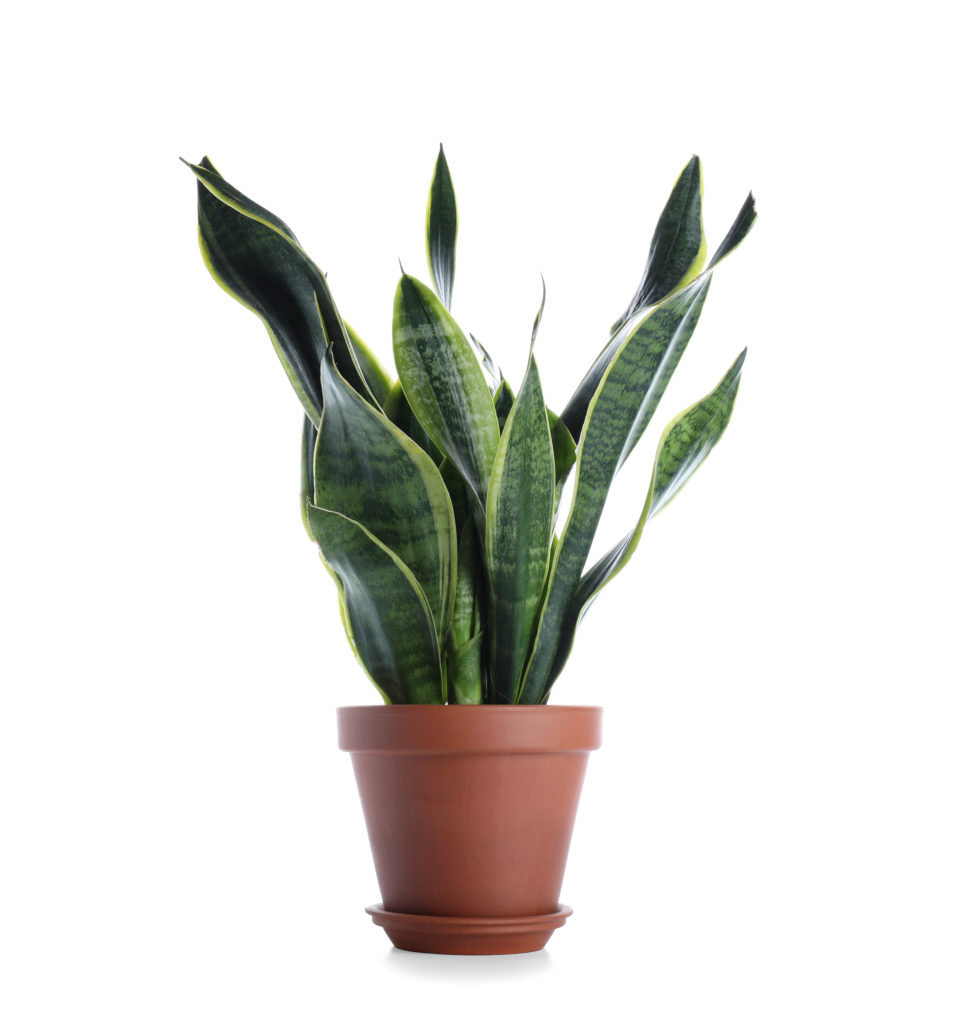
Snake plant: Also known as “Mother-in-Law’s Tongue”, this plant gets it names from its tall skinny stalk-like leaves that truly look like snakes standing on end.
- Sunlight: Amenable to various lights and temperatures, particularly good for low-light conditions
- Moisture: Succulent (arid soil); let soil dry out between waterings; you might consider using an all-purpose cactus soil. Err on the side of under-watering
- Toxicity: moderately toxic to people, cats, and dogs if ingested.
- GREAT for purifying the air
- BONUS: These can be grown in just water! Just take a clipping and put it in a glass jar and watch the roots develop. No need to transplant to soil; just replenish the water occasionally.
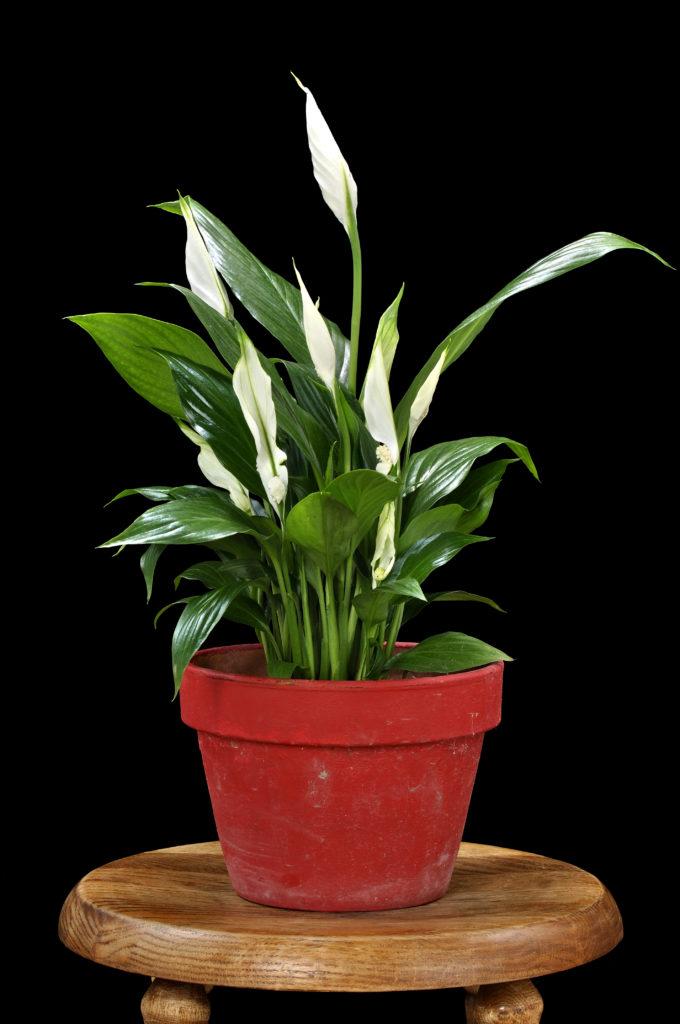
Peace Lily: Although this is not a real lily, this low-maintenance plant does produce a cup-like flower that resembles a calla lily
- Sunlight: Bright indirect light
- Moisture: Needs evenly moist, well-drained soil. Droops when it needs water
- Toxicity: Mildly toxic to pets and humans (wash hands after handling)
- Good for improving air quality
- BONUS: These can be grown in just water! Just take a clipping and put it in a glass jar and watch the roots develop. No need to transplant to soil; just replenish the water occasionally.
Aloe Vera
- Sunlight : Needs a sunny spot
- Moisture: Succulent. Cactus potting mix
- Toxicity: Mildly toxic to pet and humans IF ingested.
- Medicinal as a topical treatment for putting on burns!

Jade plant
- Sunlight: Full sun
- Moisture: Water when the top soil is dry to the touch. Be careful not to over or under water.
- Toxicity: Toxic to horses, dogs, and cats. Mildly toxic to humans if ingested.
- Fertilize once every 6 months
Chinese evergreen: An excellent choice for the novice as it is easy to care for and tolerates conditions that are less than ideal.
- Sunlight: Low to medium light
- Moisture: Well drained soil; moderate watering
- Toxicity: mild to moderately toxic if ingested; Toxic to pets
- Good for clearing the air
- BONUS: These can be grown in just water! Just take a clipping and put it in a glass jar and watch the roots develop. No need to transplant to soil; just replenish the water occasionally.
Prayer Plant: If you are afraid of commitment, this is a good one to grow because it is not known for its longevity. It is also one of the more persnickety of tropical plants to care for, but we think it is worthwhile because of its decorative leaves and unique qualities.
- Sunlight: partial to full shade
- Moisture: moist, well-drained soil
- Toxicity: non-toxic
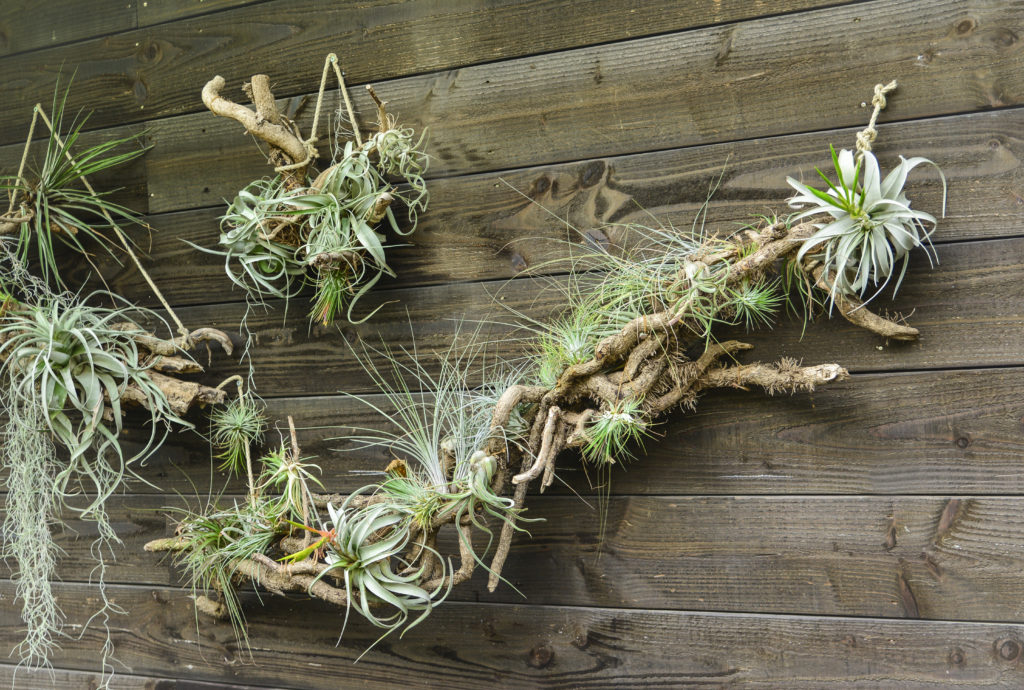
Air plant: So called because they don’t need soil, just air. You have to see them to believe them, so check out this article at Better Homes and Gardens. Here are the highlights:
- Sunlight: No direct sunlight
- Moisture: Soak plants in water once a week for about 30 minutes, then drain and return to their designated living spot. You can also mist every other day to maintain freshness/humidity.
- Toxicity: Non-toxic to pets or humans, but it would be sad if these cute plants got destroyed by a nibbling animal or a curious child, so keep out of reach to prolong the plant’s life!
- These look particularly beautiful displayed in glass terrariums
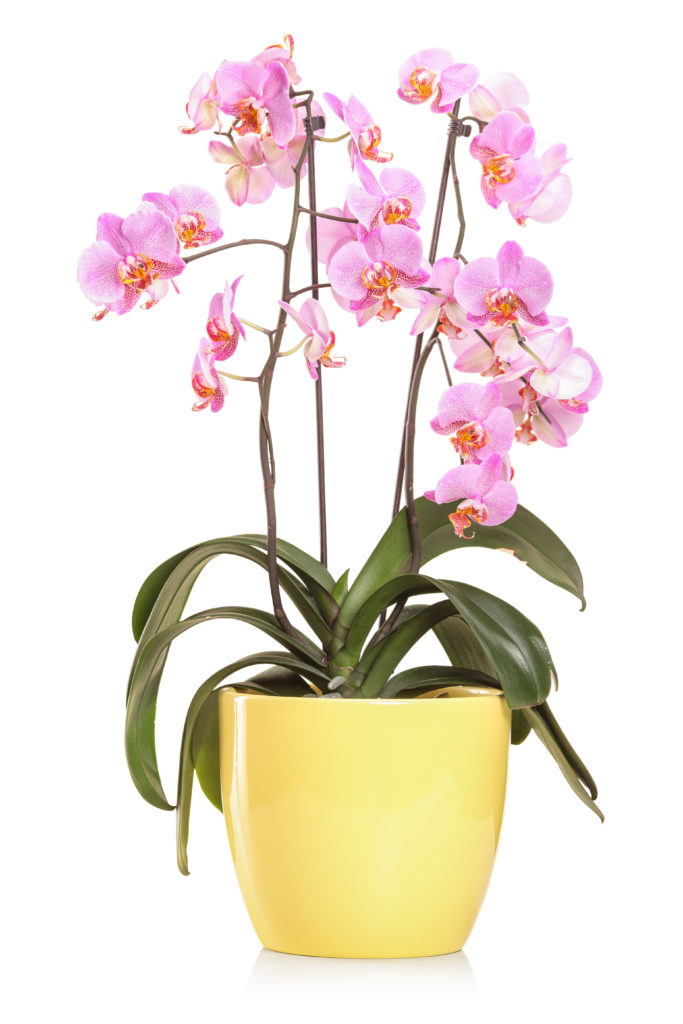
Orchid: These might take a bit more TLC, if you are patient and diligent, you will be rewarded with a gorgeous pop of color
- Sunlight: Partial light
- Moisture: Water with an ice cube once/week
- Toxicity: Non-toxic, but there are 30,000 species, so…you might want to research specific varieties.
- Don’t be too eager to transplant; orchids like their roots tight
Most importantly, don’t forget to talk to your plants. Seriously, plants thrive off of human connection and they never judge you. So, tell them they look pretty, ask them how they are feeling, tell them your worries, and dust off their leaves.
Houseplants that are hard to kill.

